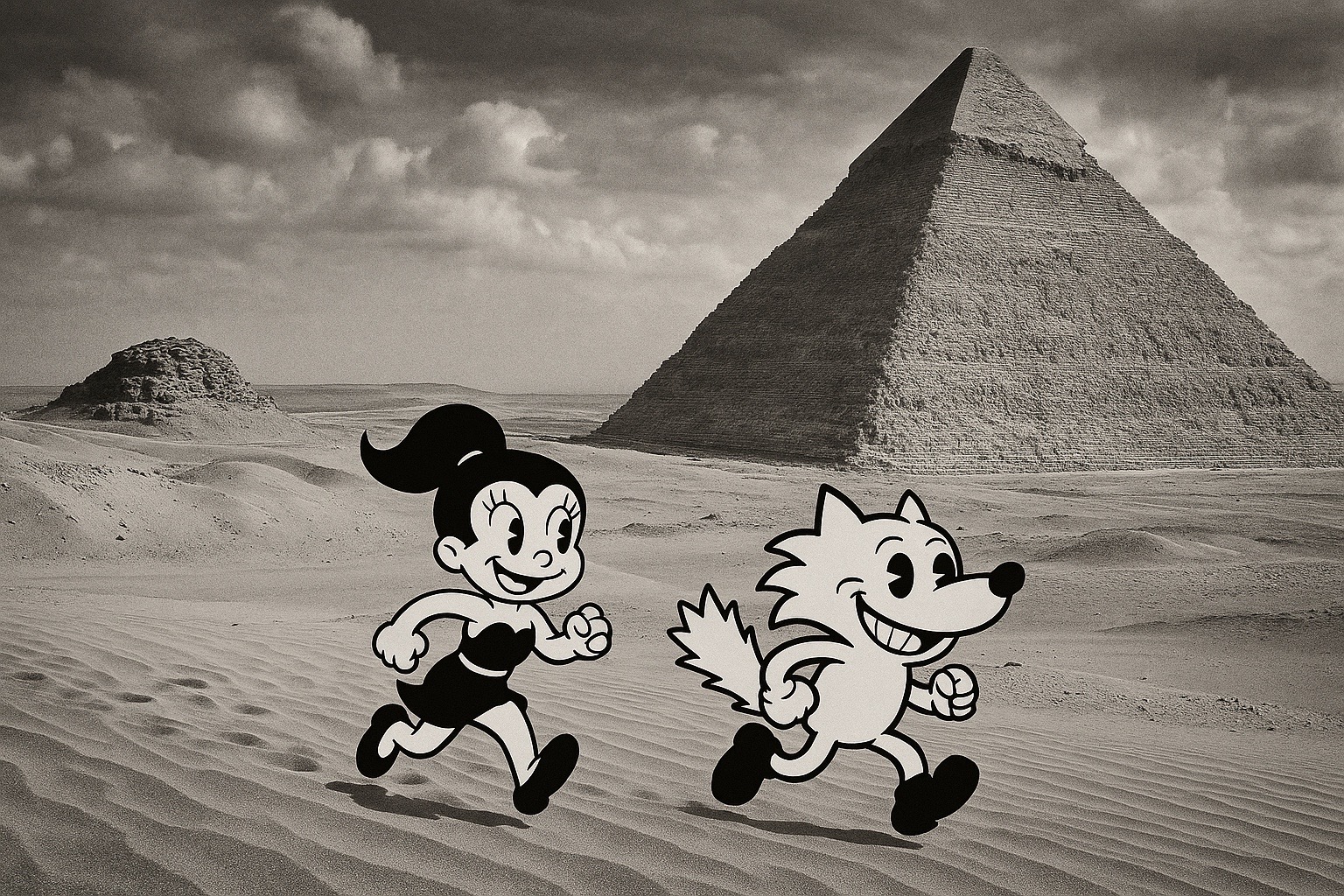
A radio broadcast announces the rumored discovery of a hidden golden city beneath the sands of Egypt. Enchanted by the news, KOEUB dreams of a luxurious home and glittering accessories, while CHIROL imagines lavish feasts and adoring female companions. Fueled by these fantasies, the pair sells their modest house to fund a one-way journey to Cairo.
Upon arrival, they find only endless desert and oppressive heat. Exhausted and dehydrated, they collapse—only to be discovered by an elderly, gentle female king cobra named Cleo-Karl, who pulls them to safety at a nearby oasis. After recovering, the three set out together in search of the fabled city.
Their journey leads them to a hidden entrance beneath a dune. Inside lies a vast, crumbling underground metropolis of golden stone. But before they can explore further, they are confronted by a colossal guardian serpent—King Uro, a towering cobra who blocks their path.
Through teamwork, distraction, and a bit of luck, the trio manages to outwit the guardian. However, instead of gold, they find a lush subterranean paradise, teeming with untouched nature. There is no treasure, but the three realize that friendship itself is the true reward.
Cleo decides to remain in the hidden world for her remaining years and gives the pair her final shed skin as a parting gift. Back aboard a passenger ship home, KOEUB and CHIROL reflect on their journey. Suddenly, CHIROL’s coat—where the snakeskin was stored—begins to glow. When they examine it, they find the shed skin has transformed into pure golden scale.
With this unexpected fortune, the two are able to rebuild their home and begin the next chapter of their lives.
Curse of the Golden Pharaoh was the first full-length feature from B&C Studio, running approximately 25 minutes. It showcases a departure from gag-heavy shorts, favoring a structured narrative with multiple acts, character development, and a moral conclusion.
Cleo-Karl, one of the few fully voiced non-human characters, is remembered for her tender presence and was reportedly animated with particular care, using more fluid frame transitions than typical for the studio at the time.
Despite its mythical elements, the film maintains the signature rubber-hose animation style. The desert and tomb settings were praised for their atmospheric detail and blend of live-action backgrounds with cel animation—a technique uncommon for the era.
While the treasure twist was unexpected, the short has since gained recognition for its emotional depth and serves as a standout entry in the KOEUB and CHIROL canon.